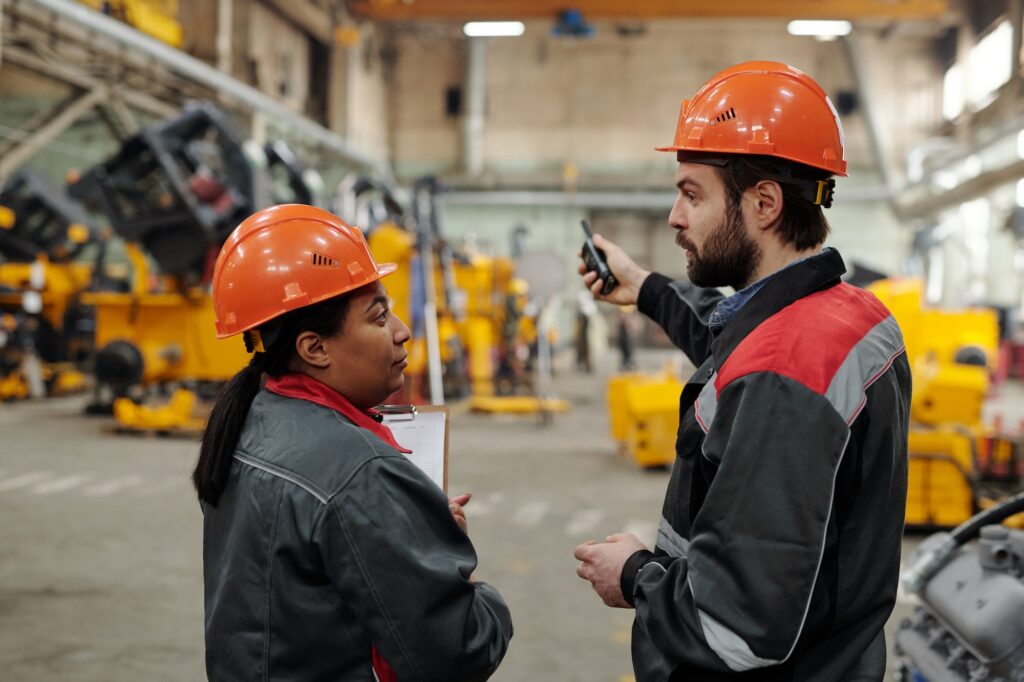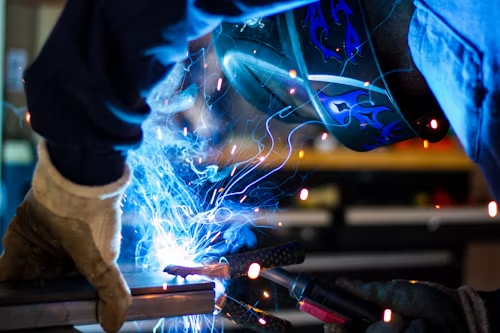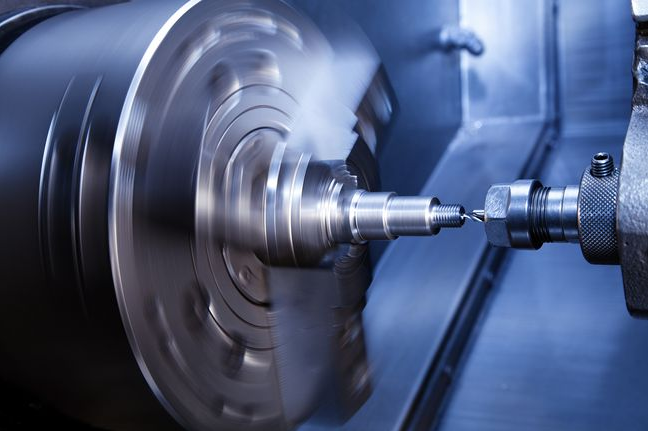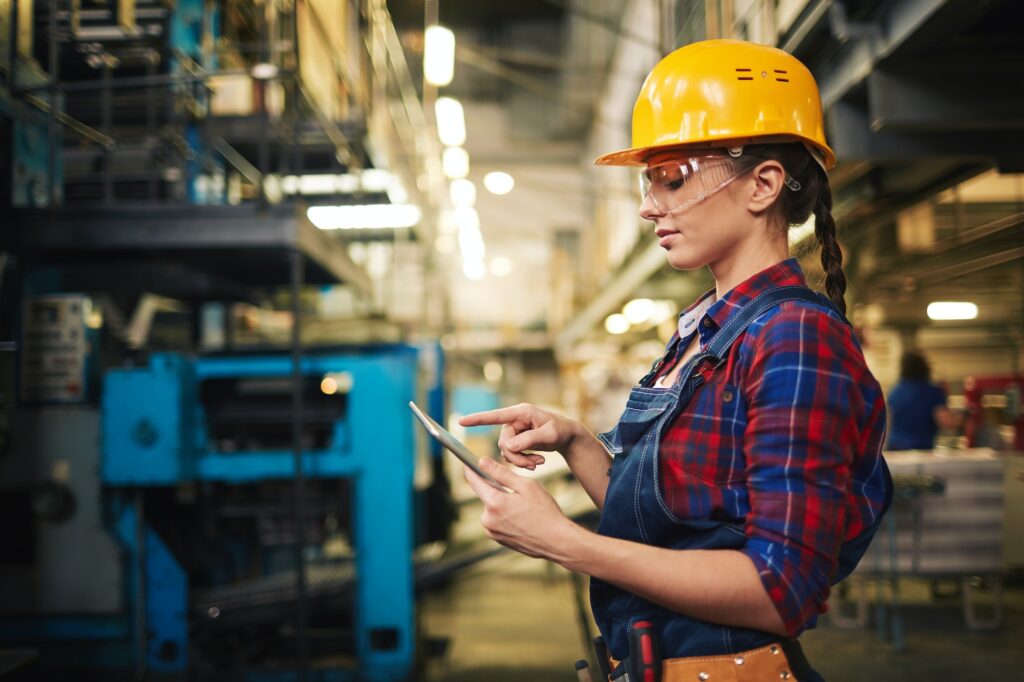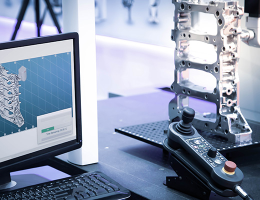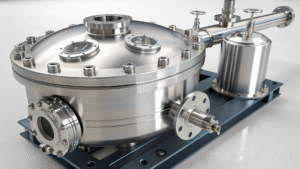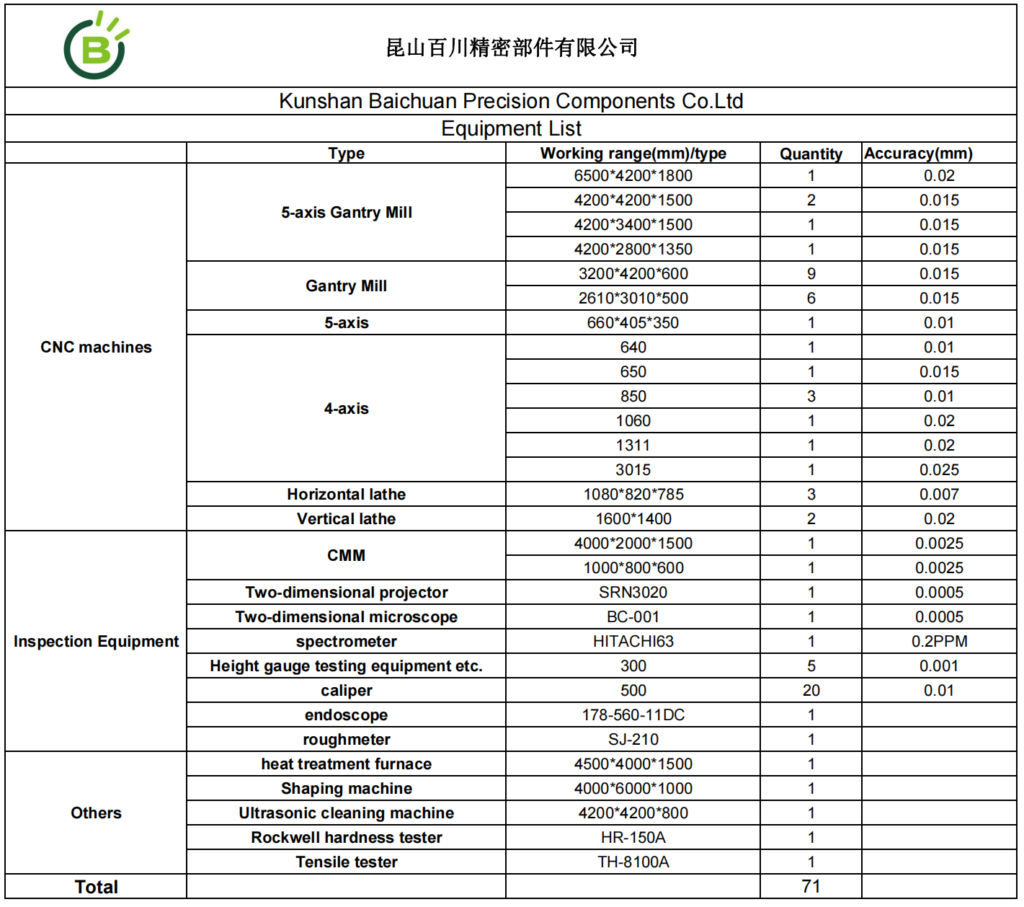Vacuum Chamber Manufacturer
Welcome to Baichuan, your premier partner for precision-engineered vacuum chambers in the semiconductor, photovoltaic, and scientific research industries. We blend cutting-edge technology with unparalleled expertise to deliver vacuum chambers that set industry standards.
- Custom Aluminum, Stainless steel, and Titanium vacuum chambers.
- High vacuum(HV) and ultra-high vacuum (UHV) chambers.
- Max work range 6500*4200*1800mm.
- Asia’s leading friction stir welding (FSW) capabilities.
- Leak testing machine, cleaning plant, heat treatment.
BaiChuan Precision - Leading Edge Custom Vacuum Chambers
Table of Contents For This Page
Our Processing Capabilities
Super large gantry processing
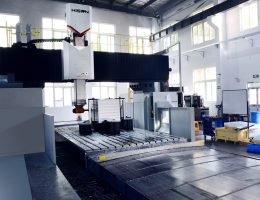
Our Welding Capability
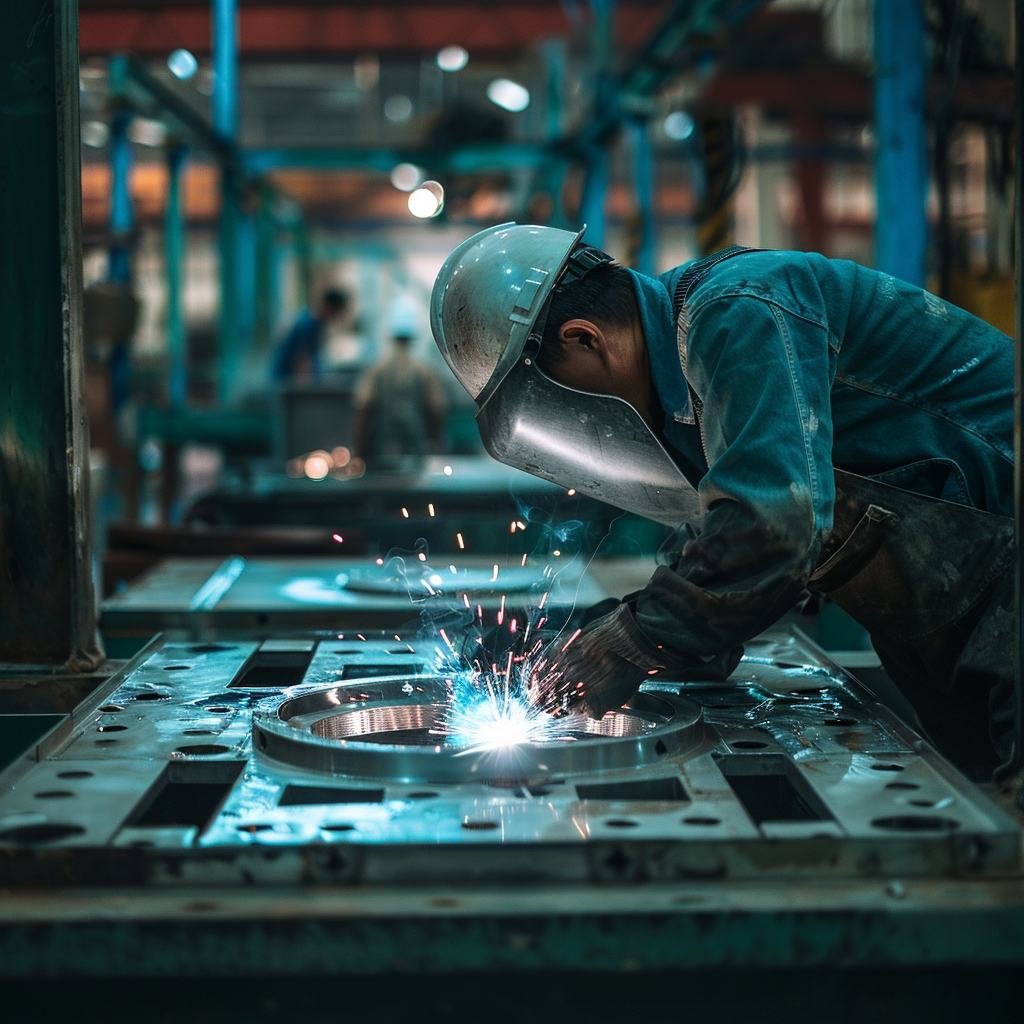
Our Welding Capability
We have a professional welding team led by former welding engineers from Fujifilm Maiban Daoti Precision Industry (Shanghai) Limited Company, which is a company under the Foxconn Group. That company has been seviced Applied Materials for 27 years, and Mr.Feng is the founder and head of the welding division. Our team are proficient in various welding technologies for vacuum chambers, such as brazing, EBW, laser welding, argon arc welding, vacuum brazing, vacuum diffusion welding, and orbital welding. Different welding types correspond to different materials such as aluminum, stainless steel, and titanium, and your various requirements for vacuum chamber welding.
Friction Stir Welding (FSW)
Why does the vacuum chamber need to be welded?
Airtight Seals: The primary function of a vacuum chamber is to maintain a vacuum or a controlled atmosphere inside the chamber. Welding is essential for creating airtight seals that prevent air or gases from leaking into or out of the chamber. This ensures that the vacuum integrity is maintained, which is critical for the processes that the chamber is used for, such as in scientific research, aerospace, and semiconductor manufacturing.
Strength and Durability: Vacuum chambers need to withstand internal pressure differentials without deforming or breaking. Welding provides strong joins that can handle these stresses over the chamber’s operational life. This structural integrity is vital, especially for chambers used in high-pressure, high-temperature, or corrosive environments.
Material Compatibility: Vacuum chambers are often made from metals like stainless steel, aluminum, or titanium, which have low outgassing rates—a critical property for maintaining vacuum integrity. Welding techniques for these materials have been developed to ensure that the welds themselves do not become sources of gas leak or contamination.
Complex Shapes and Customization: Welding allows for the construction of chambers with complex shapes or custom configurations. This is important for scientific experiments or industrial processes that require unique chamber designs to accommodate specific equipment, samples, or processes.
Repair and Modification: Over time, vacuum chambers may require repair due to wear and tear or might need modifications to suit new processes or equipment. Welding is a versatile method that can be used for both repairing damages (like cracks or leaks) and making modifications (like adding new ports or changing the chamber size).
Minimizing Contamination: Proper welding techniques minimize the risk of contamination inside the chamber, which is crucial for processes that require high purity environments, such as semiconductor manufacturing or material science experiments.
Types of Custom Vacuum Chambers
High and Ultra-High Vacuum Product
Characteristics
- Pressure Range:
High Vacuum: Typically between 10^-3 to 10^-7 Torr.
Ultra-High Vacuum: Generally below 10^-7 Torr, reaching up to 10^-12 Torr or lower.
- Material Requirements: Materials used in HV and UHV systems must have low outgassing rates to minimize contamination and pressure increases. Common materials include stainless steel, aluminum, and ceramics. Surfaces are often electropolished to reduce gas absorption and desorption.
- Sealing Techniques: Seals must prevent any air leakage into the vacuum. Metal seals are often preferred in UHV systems due to their lower outgassing rates compared to elastomeric seals.
- Vacuum Pumps: Different types of vacuum pumps are used, often in combinations, to achieve and maintain the required vacuum levels. Turbomolecular and ion pumps are common in UHV applications, whereas rotary vane and diffusion pumps might be seen in HV setups.
- Vacuum Measurement: Accurate measurement is critical. Ionization gauges are typically used in UHV conditions because of their sensitivity to extremely low pressures.
Application Scope
- Semiconductor Manufacturing: HV and UHV environments are essential for semiconductor fabrication to prevent contamination that could lead to defects in microchips.
- Surface Science: Studies involving the physical and chemical properties of surfaces often require UHV conditions to prevent contamination and to allow for the accurate measurement of surface interactions.
- Particle Accelerators: Both HV and UHV are used in the operation of particle accelerators to minimize interactions between the particles and any residual gases, which can affect the quality of the experimental results.
- Space Simulation Chambers: HV and UHV chambers are used to simulate the vacuum of space to test spacecraft components and sensors under conditions similar to those they will experience in orbit.
- Nanotechnology: The fabrication and study of nanoscale materials and devices often require UHV conditions to ensure surface purity and to enable precise manipulation of atoms and molecules.
- Electron Microscopy: UHV is crucial in some types of electron microscopes, which require vacuum conditions to prevent air molecules from interfering with the electron beam used to image samples.
- Synchrotron Radiation Facilities: UHV conditions are necessary in these facilities to prevent the absorption or scattering of the generated synchrotron radiation by air molecules.
Spherical Vacuum Chambers

- Characteristics:
- Spherical vacuum chambers have a shape that is, as the name suggests, spherical. This design provides uniform distribution of pressure from all directions, which is advantageous for certain types of experiments or processes.
- They often have multiple ports (openings) that can be used for inserting instruments or for evacuation and filling with gas. These ports are usually placed strategically to allow for flexibility in use.
- The spherical shape can be beneficial for minimizing dead spaces where gas might accumulate and not be properly evacuated.
Application Scope:
- Spherical chambers are frequently used in applications involving the study of plasmas, gas dynamics, and particle physics where isotropic (uniform in all directions) conditions are necessary.
- They are also suitable for applications requiring high vacuum levels, as their design can facilitate more uniform evacuation and less leakage.
- Ideal for experiments or applications where internal visibility and access from multiple angles are important.
Cylindrical Vacuum Chambers

- Characteristics:
- Cylindrical chambers are shaped like a cylinder, with circular faces on the ends and a long, straight middle section. This shape provides a good balance between volume and surface area, which can be advantageous for certain applications.
- They can be oriented horizontally or vertically, depending on the requirements of the application, and can be designed to accommodate large or long items.
- These chambers typically offer easier scalability in size, from small desktop models to large industrial sizes.
- Application Scope:
- Cylindrical vacuum chambers are widely used in the semiconductor and coating industries for processes such as physical vapor deposition (PVD) and chemical vapor deposition (CVD) due to their ability to accommodate long substrates.
- They are also used in materials science and engineering for the testing and development of new materials under vacuum conditions.
- Suitable for applications where a compromise between directional access and volume is needed.
Box (Cubical) Vacuum Chambers
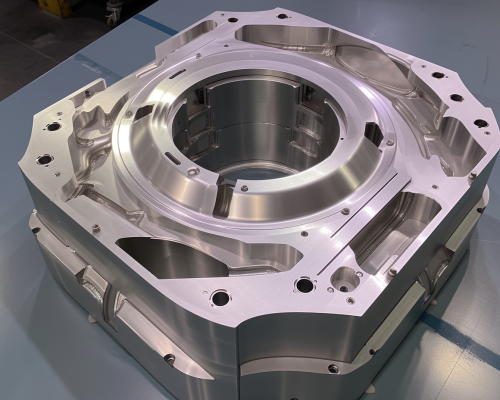
- Characteristics:
- Box vacuum chambers, as the name implies, have a box or cube-like shape. This design maximizes the internal volume for a given footprint, making it efficient for space utilization.
- They offer easy access to the interior, typically from the top or one side, making them convenient for loading and unloading of materials or for experiments requiring frequent interaction.
- Box chambers can be custom-designed with multiple ports, shelves, and internal structures to support various applications.
- Application Scope:
- Box chambers are often used in product testing and quality assurance labs for simulating vacuum conditions that products might encounter, such as in aerospace and packaging industries.
- Ideal for applications requiring a large, accessible workspace, such as large-scale industrial processes, space simulation, and thermal vacuum testing.
- They are also used in research and development for material science, biology, and chemistry where space and accessibility are critical.
Vacuum Chamber Products Showcase
Why Choose Us?
Nothing speaks louder than the Voice of a contented Client.



As the owner of a small business that develops new products for our own market and also for other companies, BC has always been very helpful as our main supplier of prototype parts from metals and plastics. For 5-6 years we have relied on BC for various prototypes for a multitude of products made from steel, aluminium, and several plastics. BC are receptive to our needs and are able to source the correct material for customised applications, such as specific grades of non-magnetic stainless steel. BC have also been our partner for manufacturing of stainless steel components for our electric bike business and polycarbonate parts for our drilling alignment monitor, as well as many other productions from a wide variety of products across multiple industries.
Sam Sewell
Bonjour je m'appelle Mickaël, je voulais faire une petite vidéo pour parler de mes retours avec la société Kunshan Baichuan Precision. Si je dois décrire en quelques mots, je dirais: attentif,très impliqué, travail de précision, réactivité et communication aisée. J'ajouterai un grand merci à mon interlocutrice Linda qui a été un soutien et une patience sans faille. Merci.
Mickaël Lauriola
3 Steps to get your parts EASILY
Own material warehouse
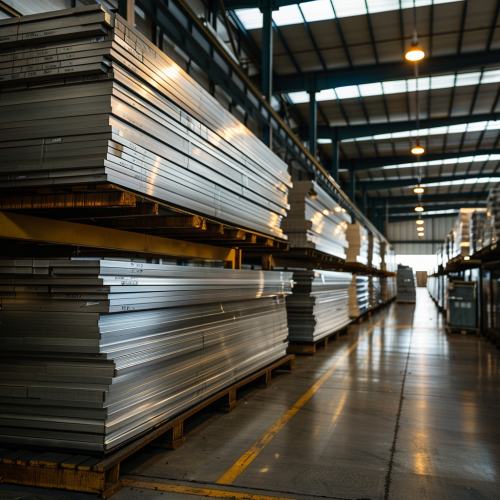
Have you ever encountered defects in your vacuum chamber due to product materials not meeting requirements? Our warehouses in Chengdu and Shanghai can provide more than 2,000 tons of spot aluminum and stainless steel materials to meet the various sizes required for processing vacuum chambers, especially materials for large vacuum chambers. We are equipped with material analyzers to test each batch of materials and issue material certificates to ensure that your vacuum chamber meets the requirements and has a longer service life. Our company is the agent of Nannan Aluminum Group. Nannan Aluminum Group provides us with materials, and our company has advantages in terms of materials.
How To Choose The Suitable Material?
Aluminum
Stainless Steel
Titanium
Post-processing of Your Parts

Cleaning
Surface Finish
Choose from our range of expertly applied finishes: Glass Bead Blasted, Machine Polished, Sandblasted, and Electropolished. Our standard offerings include flanges and precision machined components with a flawless 32-microinch surface finish, and an ultra-refined 16-microinch finish on sealing surfaces. Need even more precision?Consult with our design engineers for bespoke solutions tailored to your exact specifications.

Checking

Dimensions Checking
In the regular dimensional inspection steps, we first conduct on-machine inspection during product processing and as soon as possible after processing is completed. Then, the finished product is transferred to our CMM machine for secondary dimensional inspection. The CMM equipped with a maximum inspection range of 4000 mm allows us to inspect almost all products. At the same time, each product corresponds to a test report, which you can view at any time.
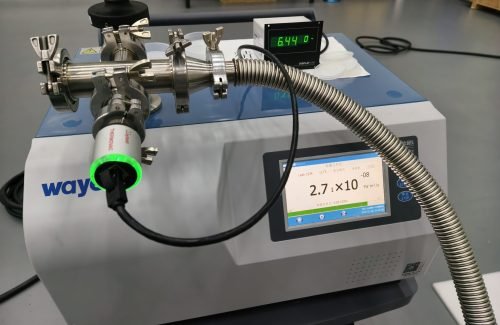
Leak Testing
Packaging
Explore Our Comprehensive Equipment Inventory
Launch Your Custom Vacuum Chamber with Us Now.
Vacuum Chamber Applications
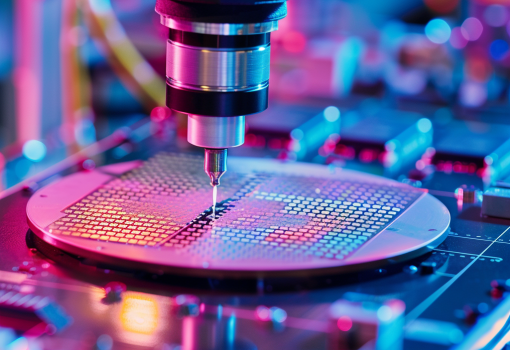
Semiconductor Manufacturing

Pharmaceuticals and Chemicals

Material Science and Engineering

Space Simulation
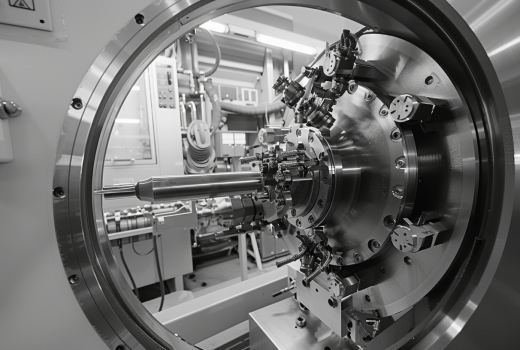
Coating Technologies

Automotive Industry
NEED HELP?
FAQs
We manufacture a wide range of vacuum chambers to suit various applications and industries:
- Spherical Chambers: Used in applications requiring uniform distribution of pressure and minimal dead spaces.
- Cylindrical Chambers: Common due to their ease of manufacturing and versatility.
- Box Chambers: Ideal for applications that require a large internal volume and easy access.
- High Vacuum Chambers: Designed for applications that require vacuum levels typically between 10^-6 to 10^-9 Torr. These chambers are essential for processes such as electron microscopy and certain thin film deposition techniques.
- Ultra-High Vacuum Chambers: Engineered for extremely low pressure environments, achieving vacuum levels below 10^-9 Torr. These are crucial in fields like surface science and particle physics, where any contamination could compromise the results.
Quality assurance is integral to our manufacturing process. We employ several quality control measures including:
- Helium Leak Testing: To ensure the integrity of the vacuum seal.
- Material Inspection: To verify the quality and suitability of all materials used.
- Performance Testing: Each chamber is tested under operational conditions to ensure it meets the required specifications.
More to Know About Vacuum Chambers
What is a vacuum chamber?
What's the difference between the different types of vacuum chambers?
Vacuum chambers can be categorized based on the level of vacuum they achieve, their design, and the specific applications they are used for. The differences often revolve around the construction materials, the technology used to create the vacuum and the ultimate purpose of the chamber. Here’s a breakdown of the different types of vacuum chambers:
1. Based on Vacuum Levels
- Low Vacuum: These chambers typically operate at pressures just below atmospheric pressure, down to around 1 Torr. They are often used in industrial processes like vacuum drying and vacuum filtration.
- Medium Vacuum: Operating at pressures from 1 Torr down to about 10^-3 Torr, medium vacuum chambers are used in processes like vacuum packaging and some forms of coating technologies.
- High Vacuum: These chambers achieve pressures between 10^-3 and 10^-7 Torr. They are essential for applications such as electron microscopy, certain thin-film deposition methods, and many types of scientific research.
- Ultra-High Vacuum: Operating at pressures below 10^-7 Torr, ultra-high vacuum chambers are crucial for advanced scientific research, including surface science experiments, particle physics, and certain high-precision manufacturing processes.
2. Based on Design and Material
- Stainless Steel Chambers: These are the most common due to their high durability and low outgassing rates. They are used across all levels of vacuum for both research and industrial applications.
- Glass Chambers: Often used in laboratory settings for medium and high vacuums, glass chambers allow for visibility of the processes inside and are generally used for experiments where observation is crucial.
- Aluminum Chambers: These are used where lighter weight is beneficial. Aluminum can achieve a high-quality surface finish which is beneficial for ultra-high vacuum conditions but can have higher outgassing rates than stainless steel.
3. Based on Specific Applications
- Space Simulation Chambers: These are large chambers designed to simulate the vacuum of space. They must be capable of achieving high or ultra-high vacuum conditions and are used to test spacecraft and satellite components.
- Thermal Vacuum Chambers: Used primarily in aerospace testing, these chambers simulate both the vacuum and the temperature conditions of space. They are designed to cycle between extreme temperatures while maintaining a vacuum.
- Degassing Chambers: Often used in materials science and manufacturing, degassing chambers are used to remove trapped gases from liquids and solids, such as resins, to prevent bubbles or weaknesses in the final product.
- Cryogenic Chambers: These are specialized vacuum chambers designed to operate at extremely low temperatures, often in conjunction with achieving high vacuum conditions. They are used for experiments in physics that require cooling samples to near absolute zero.
What are the commonly used accessories for vacuum chambers?
Vacuum chambers require a variety of accessories to function efficiently and to enable specific tasks within the vacuum environment. Here are some of the most commonly used accessories for vacuum chambers:
1. Vacuum Pumps
- Rotary Vane Pumps: Used for roughing and achieving low to medium vacuum.
- Turbo-molecular Pumps: Common for achieving high vacuum.
- Cryopumps and Ion Pumps: Used for ultra-high vacuum applications.
2. Vacuum Gauges
- Thermocouple and Pirani Gauges: Measure pressure in low to medium vacuum ranges.
- Ion Gauges: Used for high and ultra-high vacuum measurements.
- Capacitance Manometers: Provide accurate pressure measurement across a broad range of vacuum levels.
3. Feedthroughs
- Electrical Feedthroughs: Allow electrical signals or power to be passed into the chamber without compromising the vacuum.
- Fluid Feedthroughs: Permit the passage of liquids or gases into or out of the vacuum chamber.
- Mechanical Feedthroughs: Enable motion inside the vacuum, such as rotation or translation, controlled from outside.
4. Valves and Flanges
- Gate Valves: Used to isolate different sections of the vacuum system or to separate the pump from the chamber.
- Butterfly Valves: Often used for throttling the flow in larger pipes.
- KF, CF, and ISO Flanges: Various flange types that provide airtight seals between different components of the vacuum system.
5. Heaters and Temperature Controllers
- Heaters: Used to raise the temperature of the chamber or its contents for processes like outgassing or annealing.
- Temperature Controllers: Monitor and control the temperature within the vacuum chamber to ensure process stability.
6. Mass Spectrometers and Residual Gas Analyzers
- Mass Spectrometers: Analyze the composition of the vacuum by identifying gases present at low pressures.
- Residual Gas Analyzers: Used to detect and measure trace amounts of gases and contaminants within the chamber.
7. Chamber Shrouds
- Thermal Shrouds: Control the thermal environment inside the vacuum chamber, often used in space simulation tests.
- Radiation Shrouds: Protect sensitive components from radiation within the chamber.
8. Manipulators and Sample Holders
- Manipulators: Mechanical devices that allow precise movement and placement of samples or tools within the chamber.
- Sample Holders: Secure samples in place during experiments or processing.
9. Baffle Plates and Traps
- Baffle Plates: Reduce the speed and directionality of molecules, aiding in the pumping process and preventing contaminants from reaching sensitive areas.
- Traps: Capture or neutralize unwanted gases or particles within the vacuum system.
10. Cleaning and Maintenance Tools
- Cleaning Kits: Specialized tools and solutions designed for cleaning vacuum chambers and components to prevent contamination.


